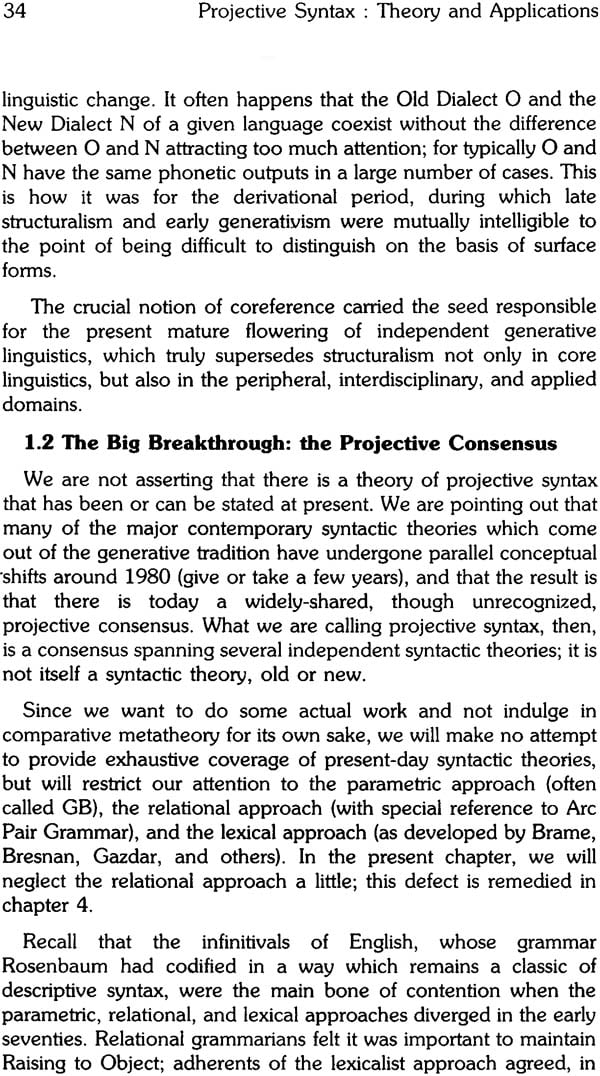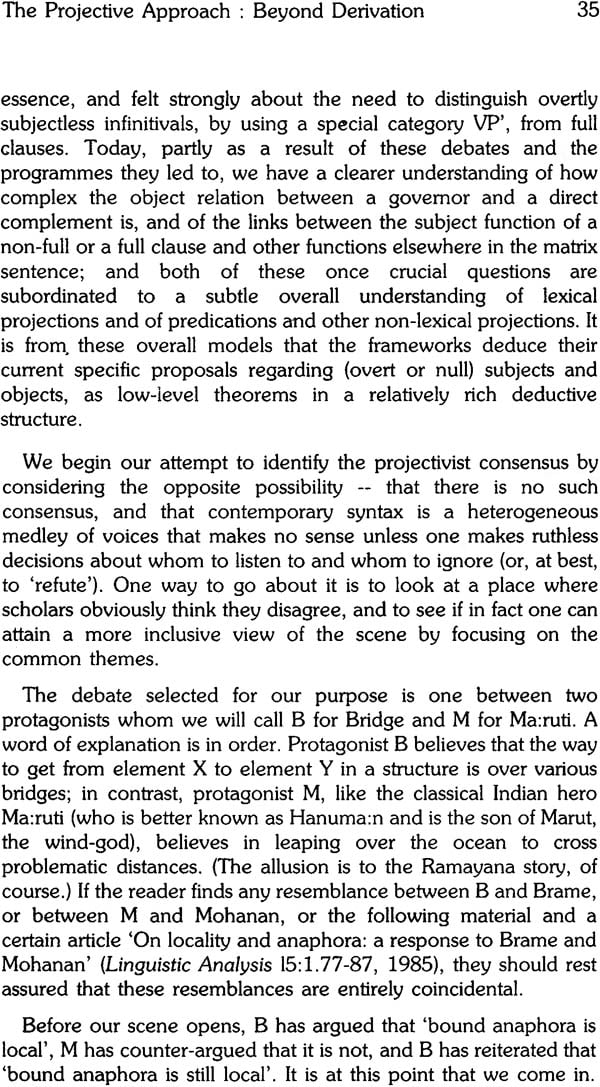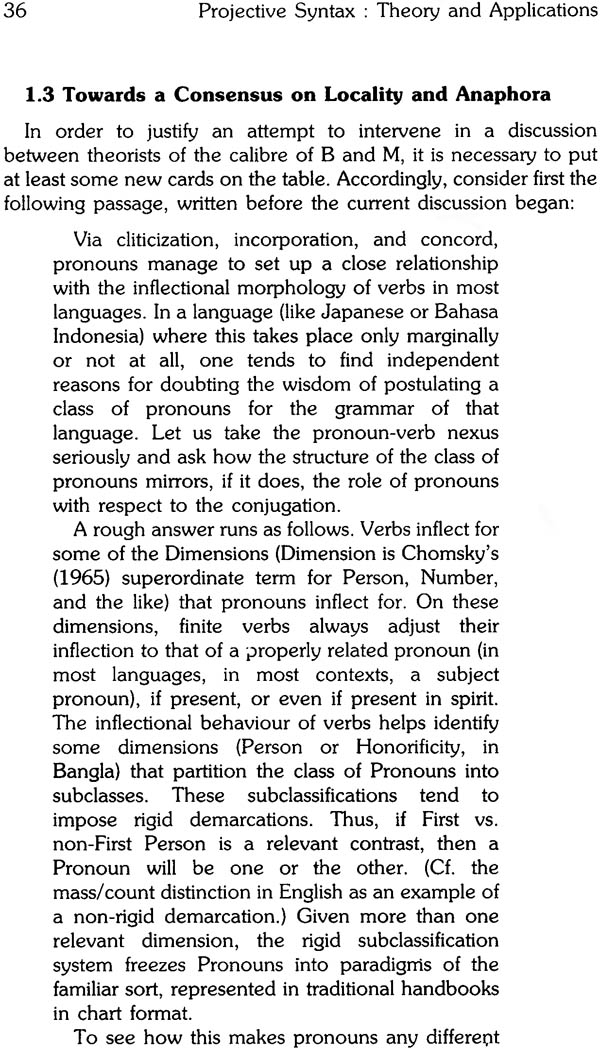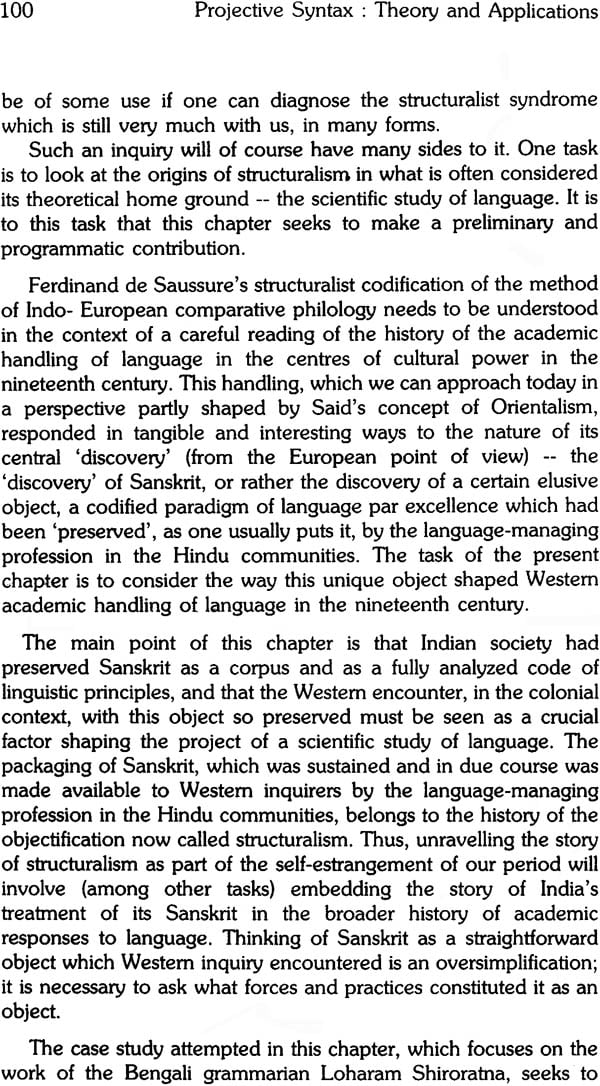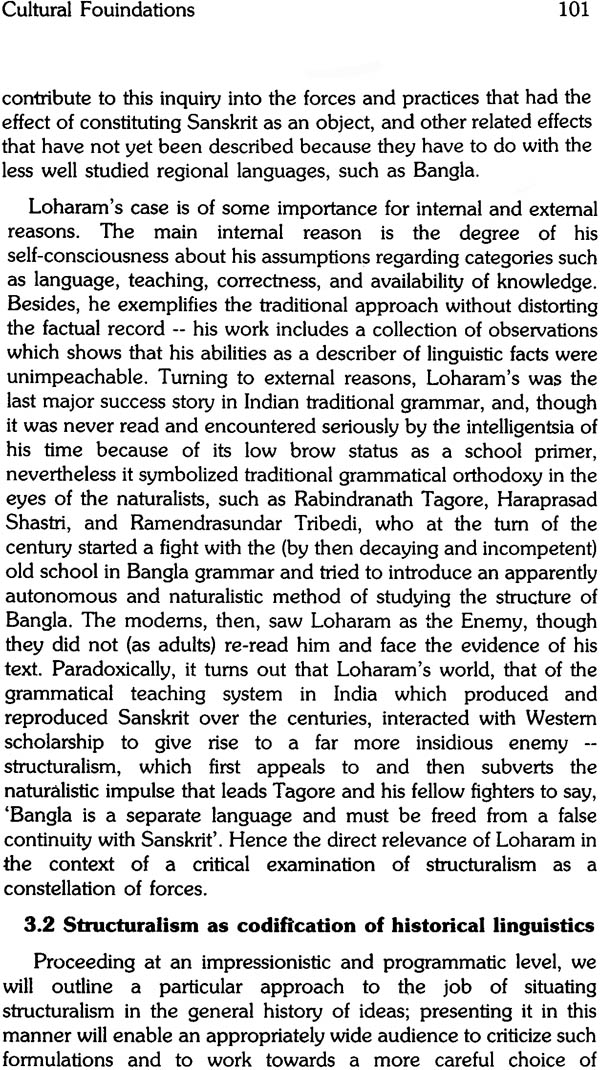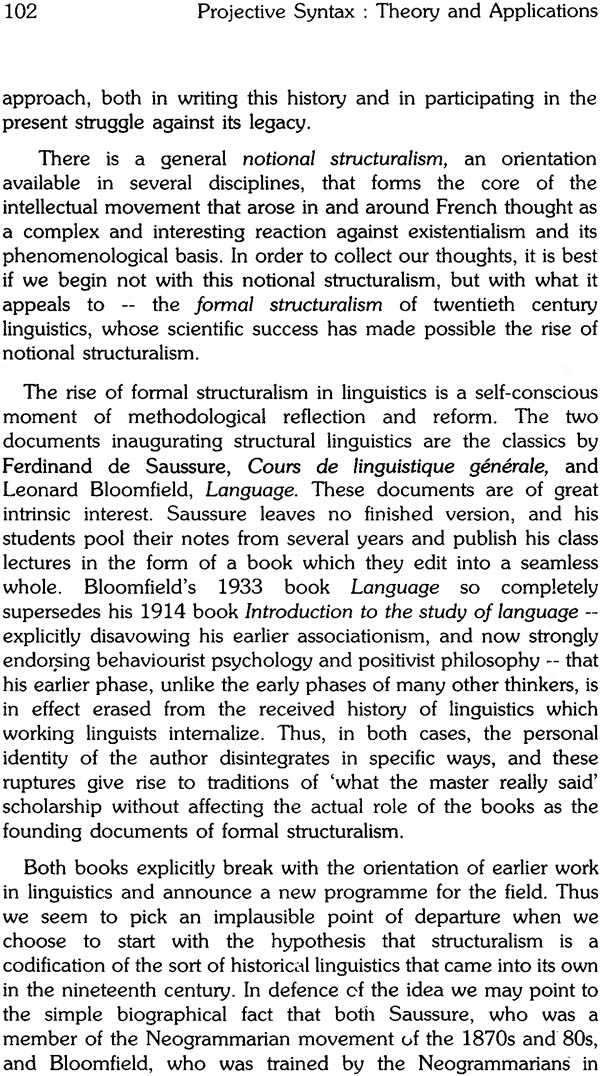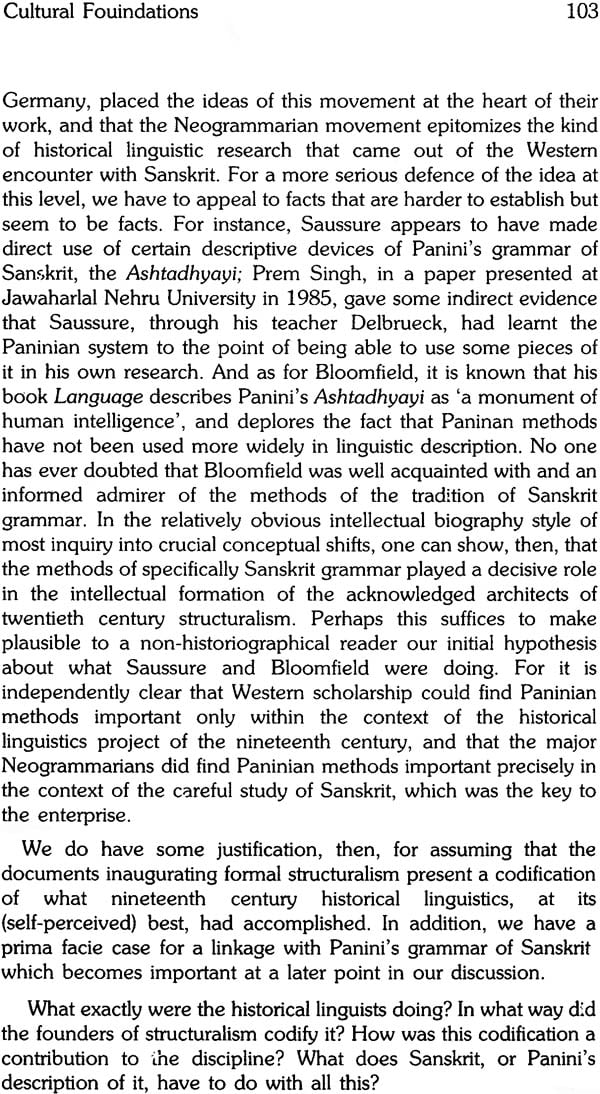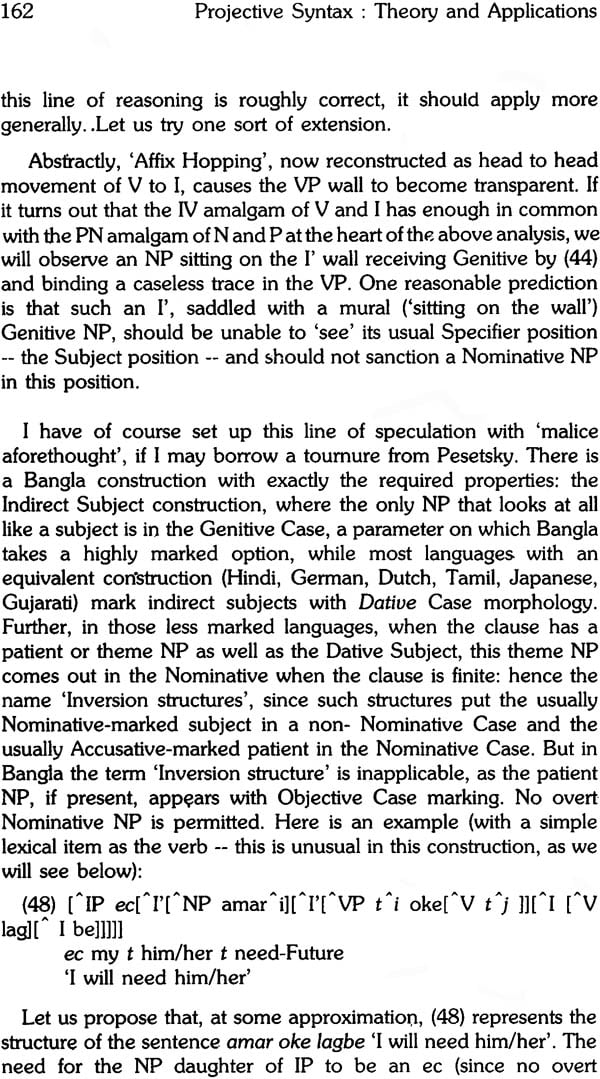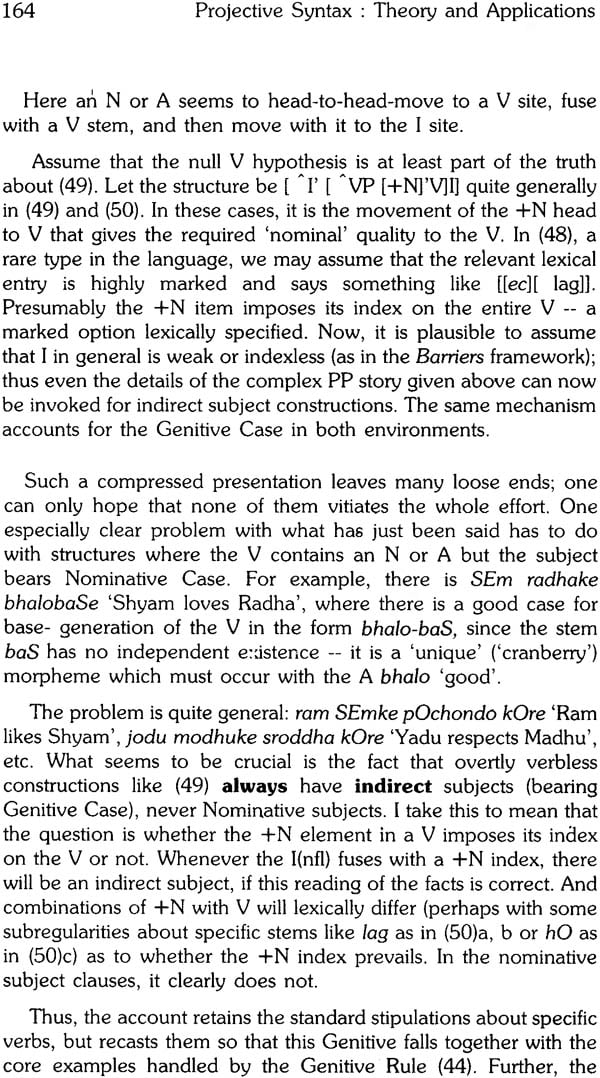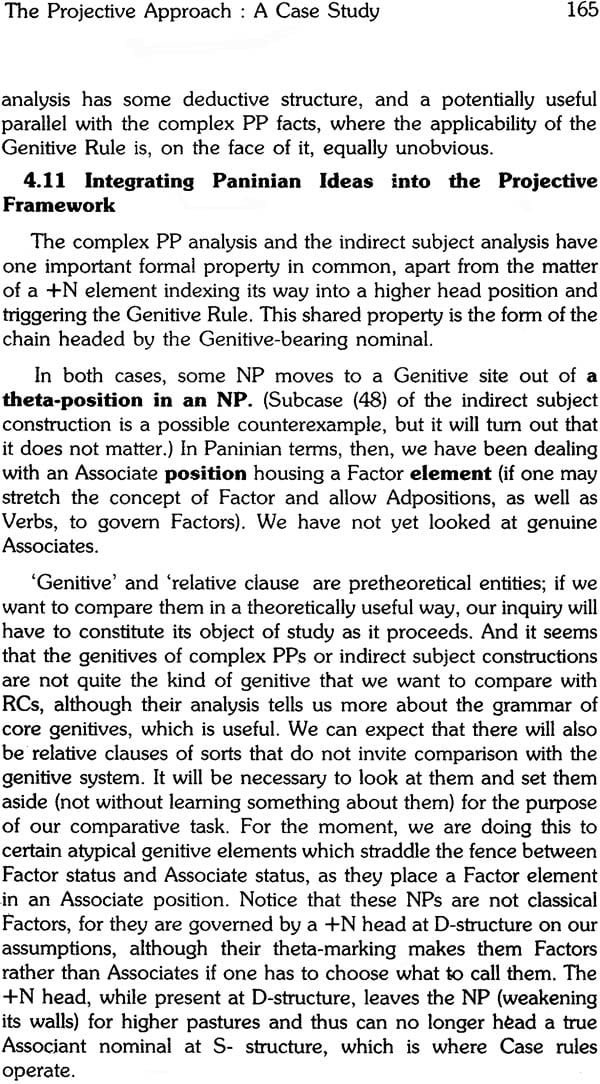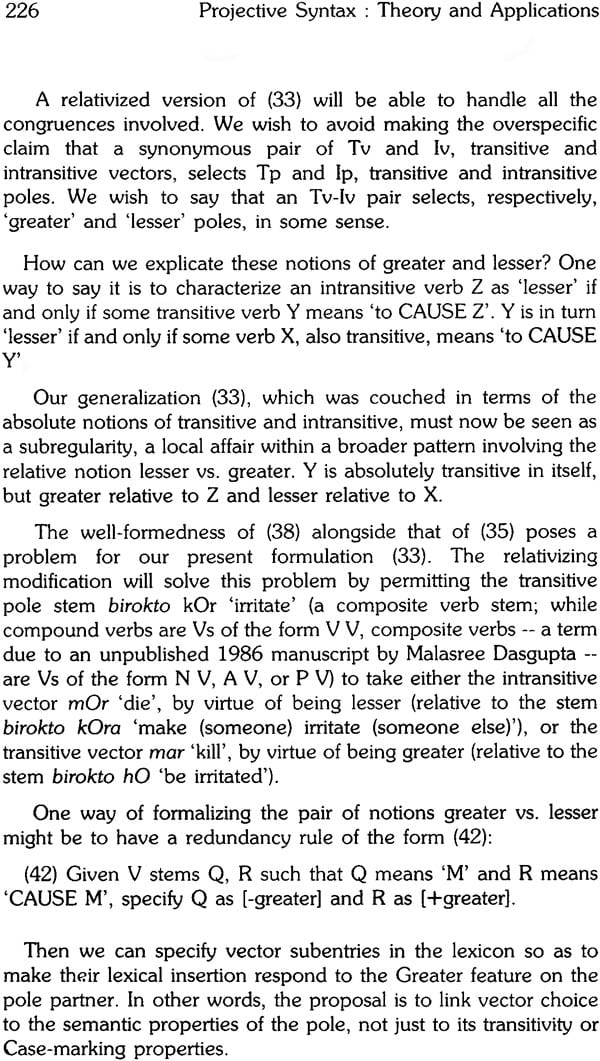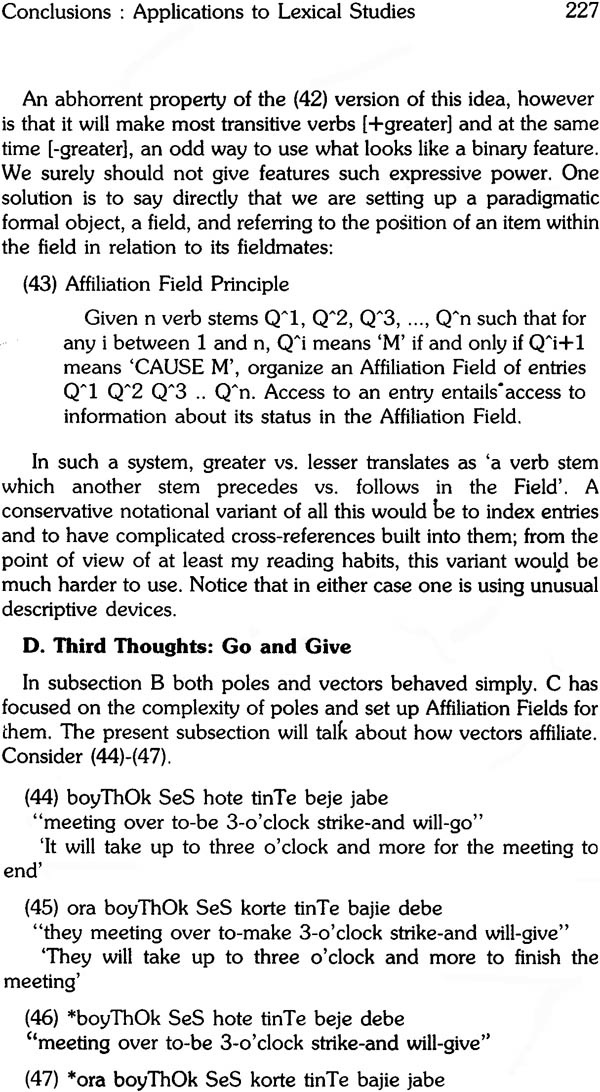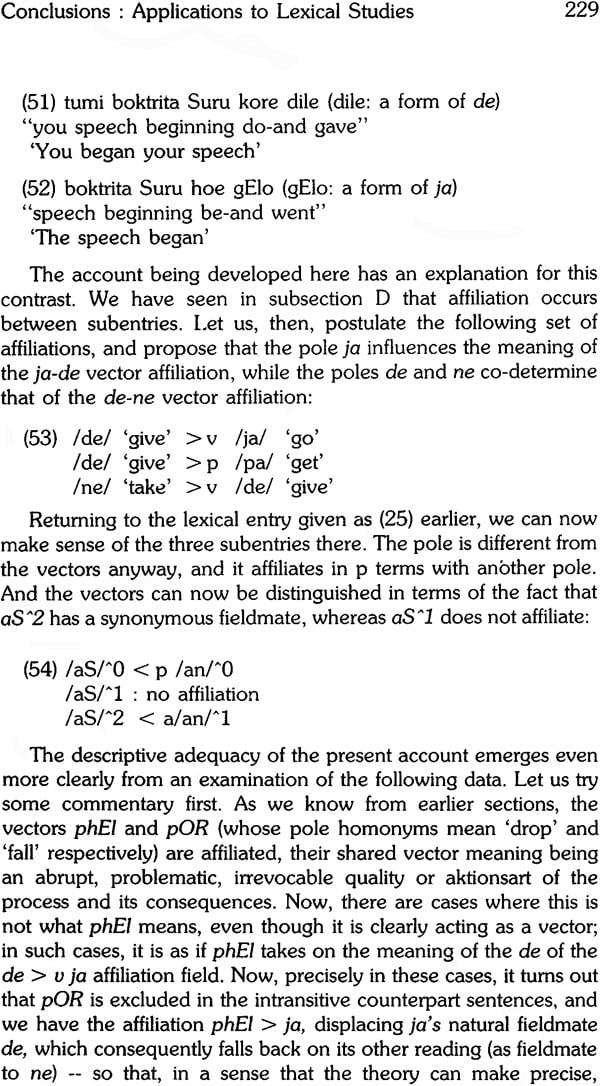
Projective Syntax: Theory and Applications
Book Specification
| Item Code: | NAL991 |
| Author: | Probal Dasgupta |
| Publisher: | Deccan College Postgraduate and Research Institute |
| Language: | English |
| Edition: | 1989 |
| Pages: | 254 |
| Cover: | Paperback |
| Other Details | 8.5 inch X 5.5 inch |
| Weight | 320 gm |
Book Description
This monograph presents its initial in chapter 1, outlines its conceptual and cultural presuppositions in chapters 2 and 3, develops the thesis into a partial theoretical account in chapter 4, and exemplifies some applications to stylistic and to lexical studies in chapter 5 and 6 respectively.
Reader familiar with the idiom of contemporary writing in literary theory may to call this monograph a contribution from structuralism, or from it negative aspects, is too general an endeavour to be designated by such a specific or context-bound name. The neo-classical broadening of the scope of linguistics today is part of a broader realignment that brings theoretical study and empirical or practical application closer together. In this introduction, let us take a general look at the background on which the whole monograph is based.
Every science has a dynamic programme at heart. This programme organically combines the theoretical urge to discover new phenomena (and to invent new ways of handling them) with the practical desire to increase our ability to manage our lives, especially to overcome those problems which the scientific method can help overcome. AS one of the sciences, linguistics too has the twin shape or reshape this world of language and trying to shape or reshape this world in accordance with people’s needs or wishes. Hence the two sectors – pure and applied. So understood, the entire science can only grow as a whole.
The need to coordinate the various wings of the joint enterprise arises in the context of this dynamic programme of science. It is in the joint interest of both halves of a science – pure and applied to ensure that they should grow together. The matter is neither purely practical nor purely theoretical. At a given moment in the growth of a science, the demanding voice of practical consumers may sound louder than the responding voice of theoretical producers. When this happens, observers may receive the impression that the practical sector has become dominat. In the science may even being to improvise their own little theories to cope with immediate tasks – an entirely their and useful thing to do. This merely dramatizes the discrepancy between demand and supply. But a phase can only be temporary ion a properly developing field. Sooner or later, the pure wing of the science, in accordance with its maturational schedule which had a logic of its own, will come up with the resources requires. And these will not only match the consumers’ needs, but in fact redefine these needs. Such an event then initiates a period of what look like a dominance of the theoretical sector. In reality it is not a matter of dominance, but a shift of attention, which again can only be transient.
In linguistics, the theoretical of the research programme is emerging from a long phase of uncoordinated polyanalysis (to coin an antonym for polysynthetesis) and getting ready to produce the sort of framework that will ‘hundred all our ninety-nines’, integrating the theory and practice of linguistics. By the late nineties, we may hope to see the first successes of a new integrated pure and applied field. In our transitional decade, the job is to identity and strengthen the emerging tendencies. The present monograph is an attempt to help linguists, especially young linguists, in their efforts to carry out this joint task.
A Model from the Pastp
It often helps to look to the past for a model, provided that one avoids direct imitation. In the sixties, as a result of incubating work done in the fifties, there was a new synthesis of phonological, syntactic, and semantic work – in the form of generative grammar. This success was made technically possible by fresh cultivation of domains that had been neglected in the structuralist tradition, especially that of syntax (with some preliminary semantics). On the conceptual plane, the generative was supported and its elaboration made possible by an appropriation of old texts, a new perception of their current appropriateness. Foremost among the ancient authors whose writing lent themselves to such appropriation was Plato.
If this model means anything for us, we may expect the current period to cultivate a neglected domain and produce the technical capability needed for a larger synthesis. And the ideas underlying this synthesis should be such as to suggest yet another sort of appropriation of ancient classics, perhaps including Plato himself.
These expectations are met. The breakthrough now in the making involves a fresh and systematic study of discourse, a field which had hitherto been neglected; and the philosophical momentum of the breakthrough, can be served by a reexamination of the Platonic dialogue directly devoted to language – the Cratylus. The present work will pay some attention to this matter; but this attention will have to grow out of a consideration of themes coming to the fore in current work.
Lyons 1981a: 36 draws a distinction between microlinguistics, which takes a narrow view (langue, competence, language-system) of its subject matter, and macrolinguistics, which takes a broad view and looks at the interface between language and literature, between language and society, between and mind, etc. He notes ‘that the distinction between, microlinguistics and macrolinguistics is independent of the distinction between theoretical and applied linguistics. There is, in principle, a theoretical aspect to every branch of macrolinguistics. It so happens that in such areas of applied linguistics as language-teaching it is essential to take the broader, rather than the narrower, view of the structure and functions of languages. This is why some author have incorporated what is have here called macrolinguisics within applied linguistics’ (36).
| Introduction | 1 | |
| 1 | The Projective Approach: Beyond Derivation | 33 |
| 2 | Conceptual Foundations | 55 |
| Appendix to Chapter 2 | 81 | |
| 3 | Cultural to Foundations | 99 |
| 4 | The Projective Approach: Case Study | 145 |
| 5 | Application to Stylistics | 185 |
| 6 | Conclusion: Application to Lexical Studies | 207 |
| Bibliography | 237 |

